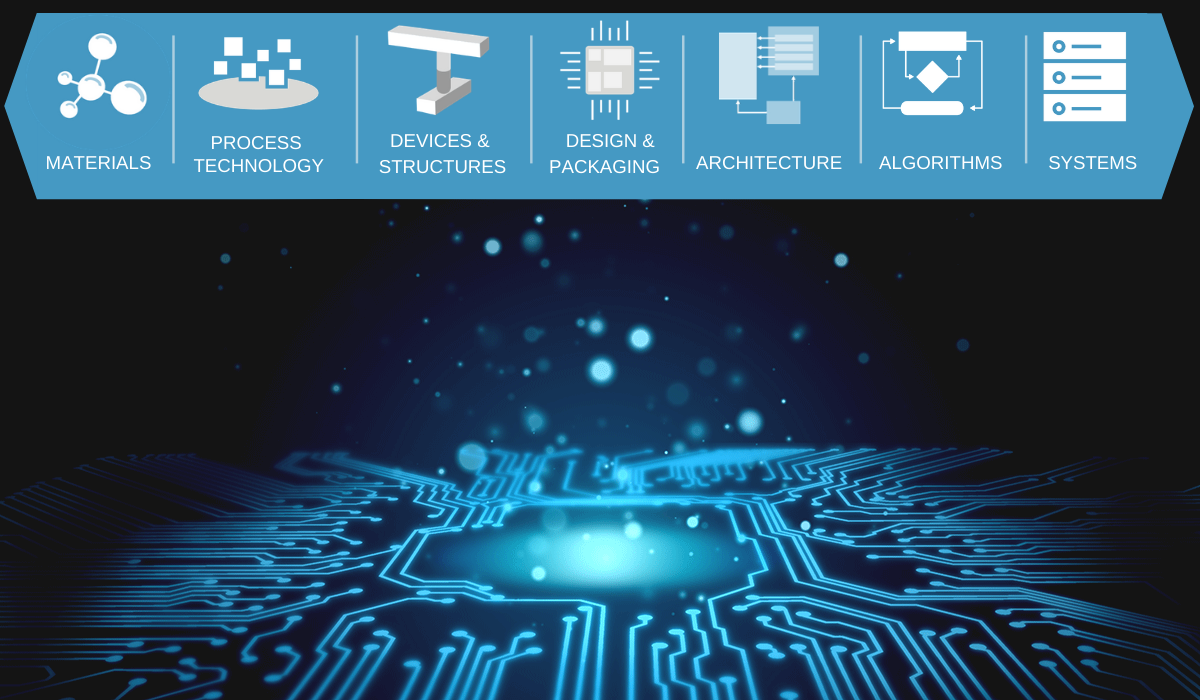Products & Technologies
Back to Menu
Products & Technologies
Services
Resources
Posted
October 25, 2019

Stay updated on our content.
Enabling the AI Era of Computing - Part 1

by Ellie Yieh
Oct 25, 2019
It’s Q4 in Silicon Valley, which means that most tech enterprises are in strategic planning mode, taking stock of where they are today and charting a course for where they want to be over the next few years. This year’s Q4 planning cycle needs to be a little different: the opportunities before us are an order of magnitude larger. So are the challenges. To get to where we need to be, our strategies need to be just as ambitious. Let’s take these in order.
On January 1, we enter a new decade. Technology pundits around the globe are expecting a new era of computing composed of the Internet of Things, Big Data and AI. The industry needs to deliver if we’re to have any chance of addressing the big problems of our time: mitigating or reversing climate change; reconfiguring agriculture to sustainably feed nine billion people by the end of the century; providing quality healthcare to a growing population without breaking the bank; and giving all children access to a quality education. These opportunities and more depend on our ability to sense the world around us with IoT devices, create a wealth of data that we can use to measure problems, and strengthen AI capabilities to make sense of the data and deliver solutions.
Driving progress is, of course, what the tech industry has always been about. Moore’s Law gave semiconductor makers the means to deliver exponential improvements in performance, power and cost (PPAC). It put supercomputers in our pockets and data centers in the cloud. Moore’s Law did more than that, though: it provided a cadence and rate of progress around which the entire technology value chain could structure its strategic planning.
A year ago, Applied Materials CEO Gary Dickerson discussed “The Perfect Storm.” The AI Era is fueling an explosion of data—while Moore’s Law is no longer the predictable engine of progress that it once was. Increasingly, the industry agrees that the opportunities and challenges have never been greater.
What’s the strategy for success? At Applied and across the industry, experts have been talking about a “New Playbook” that takes us beyond traditional Moore’s Law scaling to continue and even accelerate the rate of progress we used to take for granted. First, the New Playbook requires more techniques to drive PPAC:
- New architectures
- New materials
- New 3D structures
- New ways to continue 2D scaling
- And advanced packaging for heterogeneous designs
Second, the New Playbook requires everyone in the industry to get out of our specialized siloes to think and cooperate more broadly. We need more connectivity across the disciplines, from materials, to process technology, chipmaking, chip and packaging design, microarchitecture, algorithms, and systems. In short, “from materials to systems.” To achieve the promise of the AI and Big Data era, we need to embrace the goal of moving from materials to systems 10 times faster than we can without a New Playbook for industry collaboration.
In recent months, we’ve been engaging with fellow engineers and technologists working to evolve the way the industry operates to address the challenges before us. At the AI Design Forum, Google’s Cliff Young took the stage to ask for a new level of cooperation to tackle “end-to-end problems” that no one discipline can solve on its own.
Over the summer, we participated in an in-depth series of articles by EE Times, exploring how cloud service providers are racing to enable AI and challenging the semiconductor industry to move faster as well.
For the computing industry, one challenge needs special attention: power. Unchecked, the data explosion can become a power explosion, at exactly the wrong time as we think about the climate challenge. Applied Materials is committed to working with the industry to reduce power though architectural innovation, from the simplest IoT devices to the largest cloud data centers. If we don’t change the architectures, then the Big Data/AI Era will become a problem instead of a solution.
And this takes us back to the topic of the Q4 planning cycle. With opportunities and challenges of this magnitude, we need to open the strategic planning lens and decide where we want to be in 2029. Materials to systems 10 times faster requires new strategic thinking and planning.
What does this look like? At the AI Design Forum, Google’s Cliff Young offered this idea for how we can get there: “What I'd like to ask for is true codesign collaboration. We've got the architecture and algorithmic pieces … so let's push from Google and the other AI people down towards materials. And let's push from materials and devices back up.”
Codesign and collaboration. Materials to systems—and systems to materials—as one industry-wide process. In the next blog in this series, we’ll discuss what that looks like in practice.
Tags: artificial intelligence, Big Data, PPAC, AI Design Forum, iot, Moore's Law
Ellie Yieh
Corporate Vice President, Advanced Product Technology Development

As corporate vice president for Advanced Product Technology Development, Ellie is responsible for Applied’s state-of-the-art Maydan Technology Center and works closely with customers to drive advanced product development and technology roadmaps. In addition, Ellie leads R&D for developing new memory and logic innovations. She received a B.S. in chemical engineering from the University of California, Berkeley and holds more than 100 semiconductor engineering patents. In 2016 she was inducted into the Women in Technology International Hall of Fame for outstanding contributions to scientific and technological communities. She was also named one of the 2015 “Top 50 Most Powerful Women in Technology” by the National Diversity Council. Learn more about Ellie’s career journey in this Nanochip article.

Now is the Time for Flat Optics
For many centuries, optical technologies have utilized the same principles and components to bend and manipulate light. Now, another strategy to control light—metasurface optics or flat optics—is moving out of academic labs and heading toward commercial viability.

Seeing a Bright Future for Flat Optics
We are at the beginning of a new technological era for the field of optics. To accelerate the commercialization of Flat Optics, a larger collaborative effort is needed to scale the technology and deliver its full benefits to a wide range of applications.

Introducing Breakthroughs in Materials Engineering for DRAM Scaling
To help the industry meet global demand for more affordable, high-performance memory, Applied Materials today introduced solutions that support three levers of DRAM scaling.
